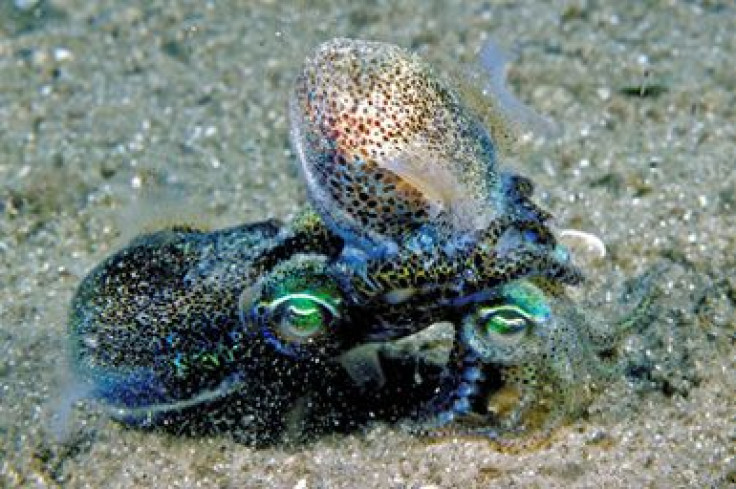Promiscuous Squid Need to Take Extra-Long Break After Mating

One promiscuous species of squid mates for up to three hours and cannot return to peak physical form for up to 30 minutes.
The species, the dumpling squid (Euprymna tasmanica), is named for its bulbous shape. They are short-lived, seeing only their one-year birthday at the most. In that time, they are known for spending months toward their end of their lives mating with as many other squid as possible.
And it seems to be physically taxing.
Studied by Amanda Franklin, Zoe Squires, and Devi Stuart-Fox at the University of Melbourne, the squid were placed in a body of water in the laboratory. Researchers measured their swimming ability against a constant current. The squid were then allowed to mate, and afterwards the scientists measured their swimming ability. Squid took up to a half hour to reach their previous capacity.
During mating, the male initiates contact by grabbing the female and holding her the entire period of copulation. Males are energetic during the process: squirting ink, pumping streams of water into the female’s body. Though females are less active during the act, researchers theorize that in being held down, males cut off females’ access to oxygen.
Females lay batches of eggs in the days following mating, but can hold onto sperm to fertilize their eggs at a later date.
In a statement released by the university, Franklin said, “Our results were a little surprising as the degree of fatigue was similar in both genders even though mating looks more strenuous for males.”
This study was one of the first examining the physical toll of mating, as decreased physical energy could put squid at risk to predators. Researchers theorize that squid burrow in the sand to avoid their predators during this time, though this, of course, means that they cannot search for other sexual partners or food.
The dumpling squid is in the bobtail family of squids. They live off the coast of Australia.
The results of the study have been published in Biology Letters.



























